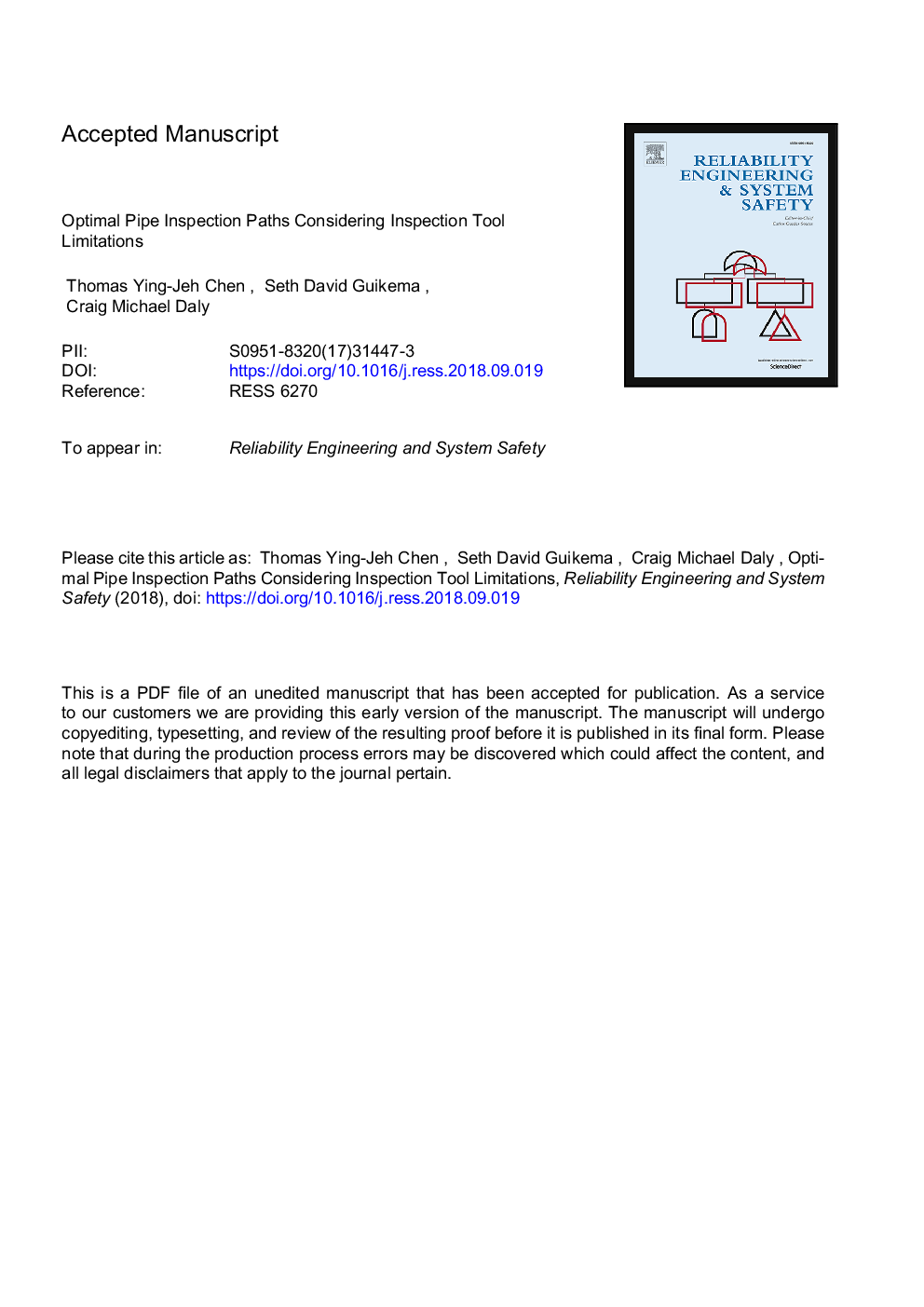| Article ID | Journal | Published Year | Pages | File Type |
|---|---|---|---|---|
| 11027777 | Reliability Engineering & System Safety | 2019 | 38 Pages |
Abstract
The inspection of deteriorating water distribution pipes is an important process for utilities. It helps them gain a better understanding of the condition of their buried conveyance systems and aids better decision making for risk-based asset management. In-pipe continuous inspection tools provide high resolution and accurate data, but they have seen relatively limited use due to cost and operational constraints. To facilitate-cost efficient deployment of these technologies and maximal information gain, a process that finds high risk pipes to inspect while accounting for the limitations of the tools at hand is needed. This paper shows how to incorporate these considerations within an optimization formulation, and examines the use of Evolutionary Programming, Simulated Annealing, and Greedy Search heuristics to identify inspection paths. Case studies performed on both synthetic and real world networks demonstrate that Evolutionary Programs are the most effective. While only three factors are used to characterize tool limitations, the method presented in this paper can be extended to include technology-specific complexities in real world applications.
Related Topics
Physical Sciences and Engineering
Engineering
Mechanical Engineering
Authors
Thomas Ying-Jeh Chen, Seth David Guikema, Craig Michael Daly,
